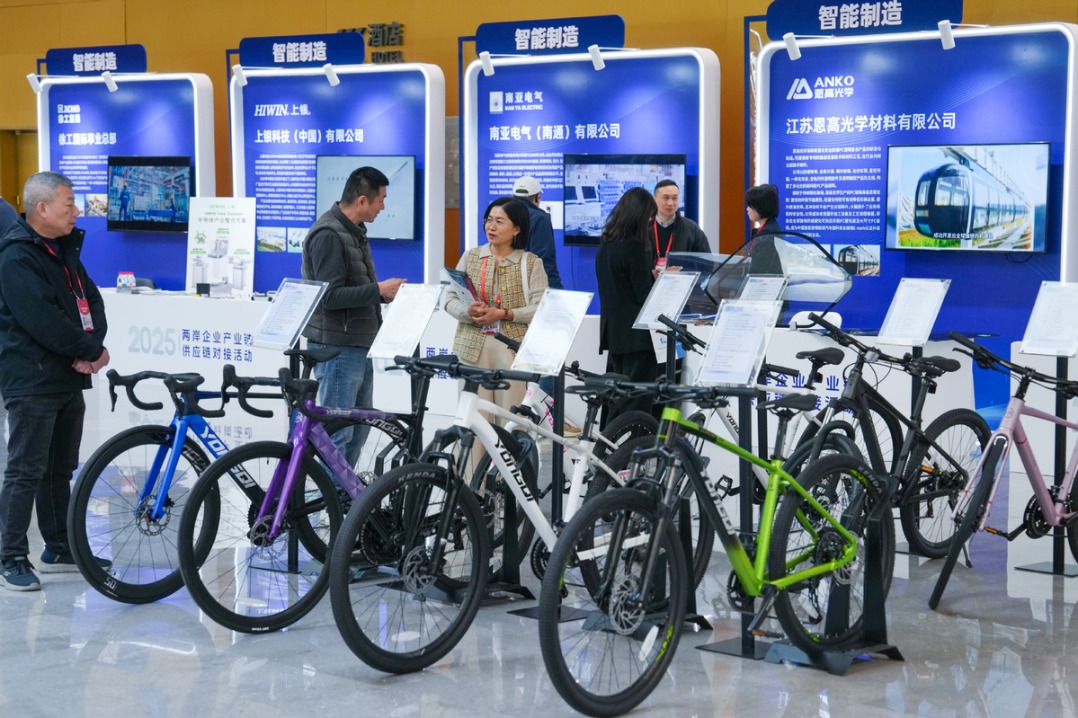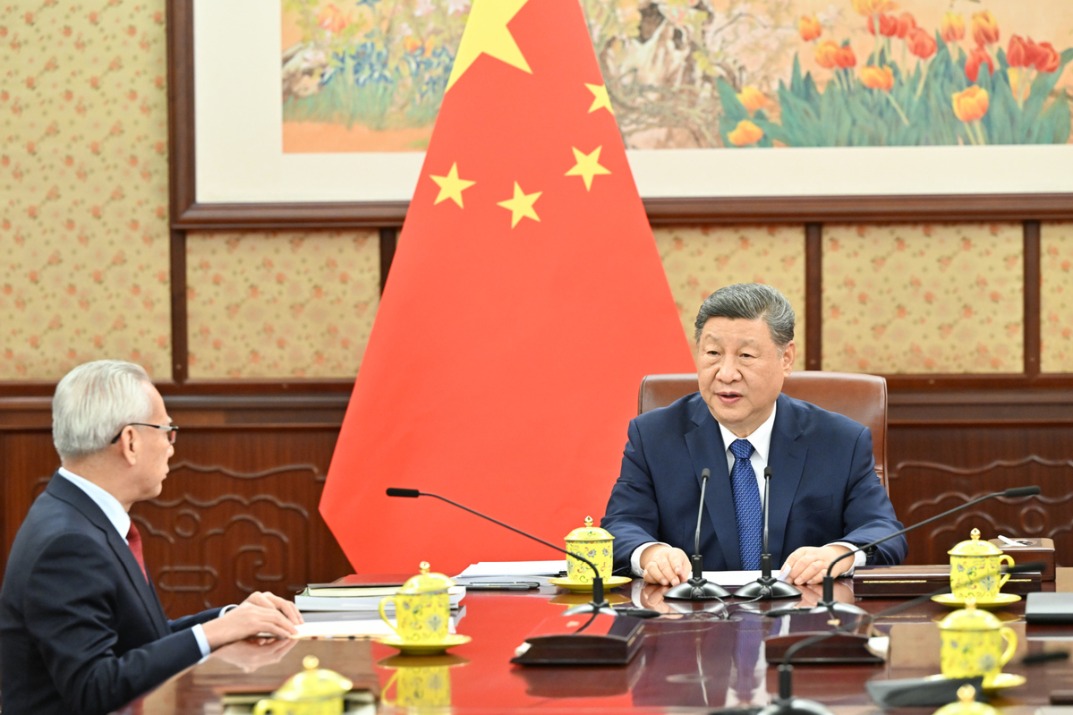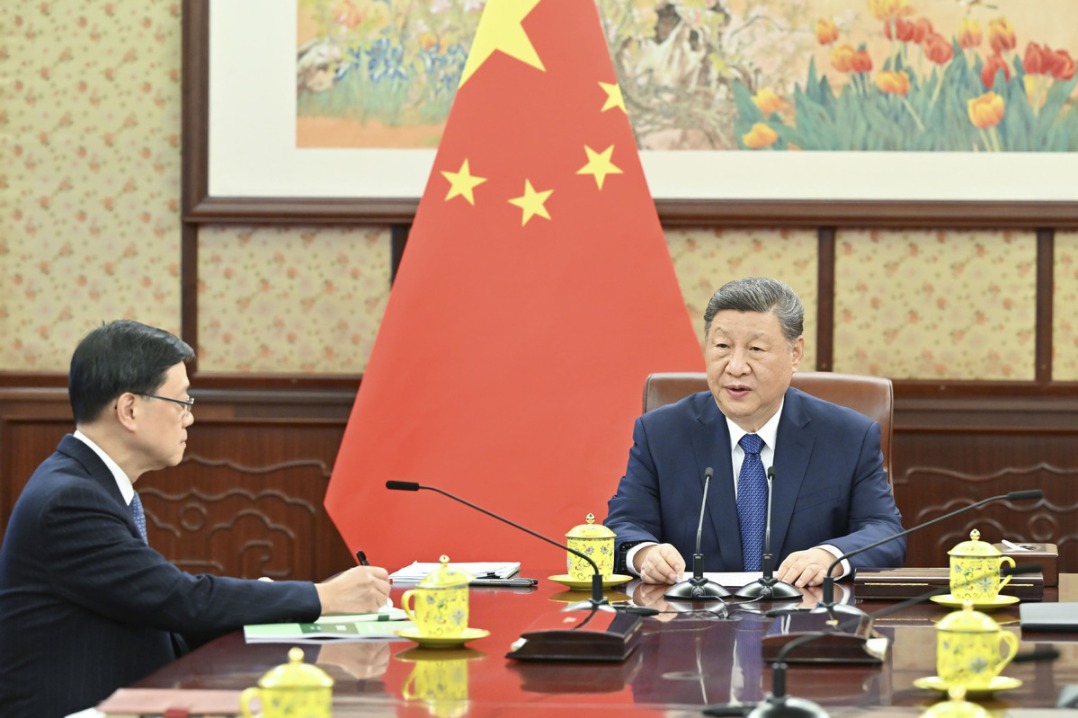Ethnic art lifts Tu from poverty
By ZHENG JINRAN in Xining | China Daily | Updated: 2019-09-09 09:25

Women of relocated village in Qinghai earn money from embroidery tradition
Farmers from the plateau that covers northwestern China's Qinghai province have developed more ways to cast off poverty using their local specialties of embroidery and winemaking since moving down from the mountains.
"It used to be a basic skill for girls to learn embroidery, used for clothes like their wedding dresses, but now it has turned out to be valuable and popular in the market," said Ha Chengqing, who formed a company in August 2017 that allows 145 skilled embroiders from the Tu ethnic group to sell their products.
Coiled embroidery, a national intangible cultural heritage since 2006, is a unique traditional ethnic art of the Tu people, with over 1,000 years of history.
Ha's company, in Banyan village in Huzhu Tu autonomous county, has sold exquisitely embroidered products like handbags around the country through online shopping platforms, she said.
Among the 145 women working for the company, 93 were from poverty-stricken families, Ha said, adding that the income they made could help support their families. Growing sales have helped each of them earn more than 600 yuan ($84) a month since the company opened.
"It's an excellent job for us, since we can do what we usually do and take care of our family," said Zhang Drolmakyi, an inheritor of the coiled embroidery tradition. She said the extra money from her embroidery could bring her family thousands of yuan a year.
The embroidery company is close to her house in the newly built village, which was relocated from the mountains in 2016.
All 1,396 villagers from 369 households have moved into their new government-subsidized houses, said Ma Hongqing, deputy Party chief of the village.
In August 2016, President Xi Jinping visited Banyan and met some families, highlighting relocation's role in effectively relieving poverty.
Xi said the new village should be integrated with measures to promote production and employment, improve basic public services and protect ethnic, regional and cultural features and styles.
"During the visit, the relocation was in the first stage, with the roads still muddy after rains, but now we all live in new houses and all the families in the village have been lifted out of poverty," Ma said.
The village's annual per capita income reached 5,581 yuan by 2017, he added, far more than when they lived in the mountains and relied on livestock breeding and farming.
Lyu Youzhang, 79, has witnessed the improvement, saying his grandchildren have easier access to primary school and there are more visitors from neighboring regions.
"Our catering services, mainly serving visitors our local cuisine, have also increased our income," he said.
The local winemaking tradition has also been expanded from homes to mass production, with some factories built near the village selling wine online.
Qinghai, located in the northeast of the Qinghai-Tibet Plateau, was previously home to a large number of poverty-stricken people. But it has implemented various measures to reduce poverty, such as relocation, and aims to lift the remaining 77,000 people living in poverty out of that plight by the end of this year, the provincial government said.
























